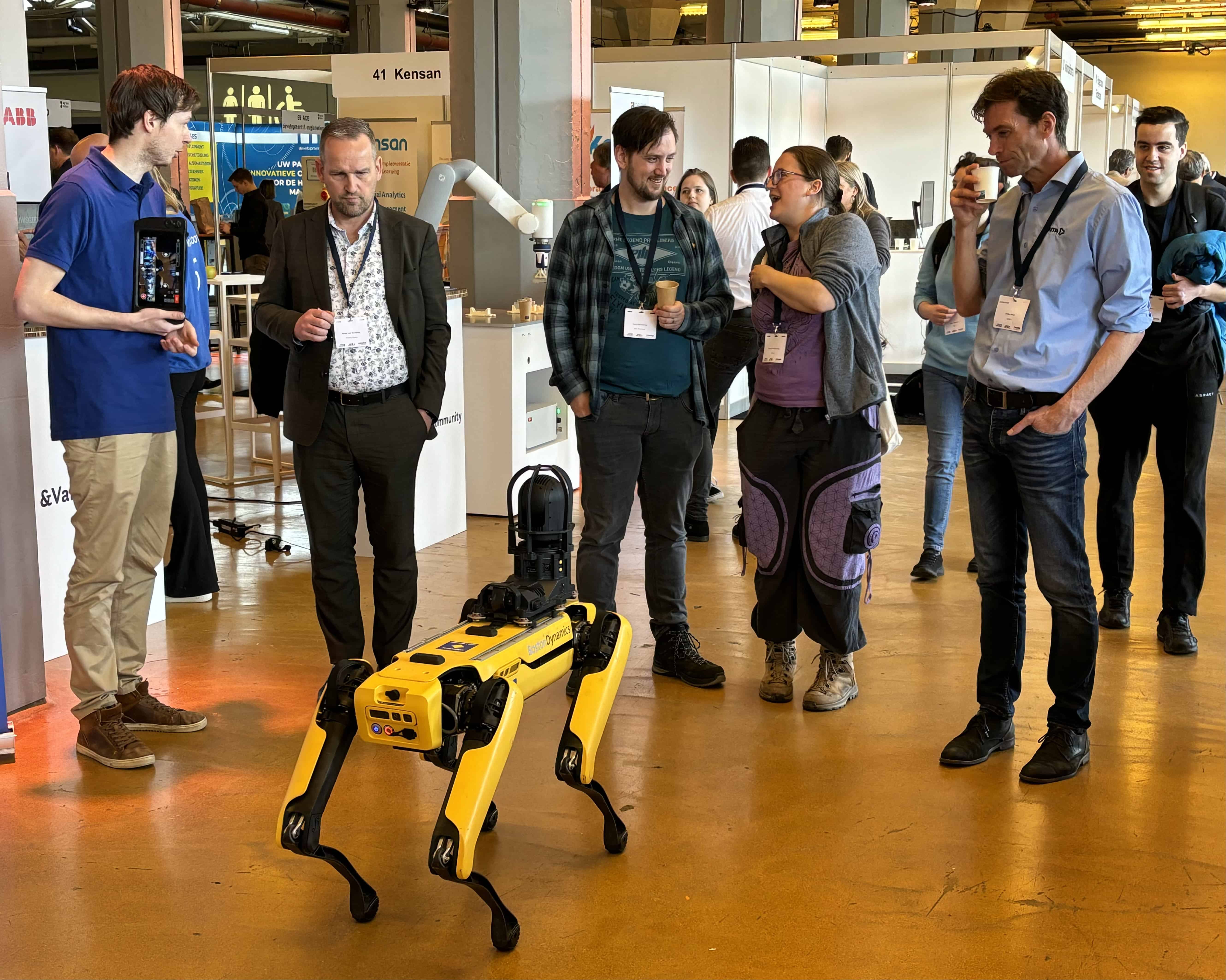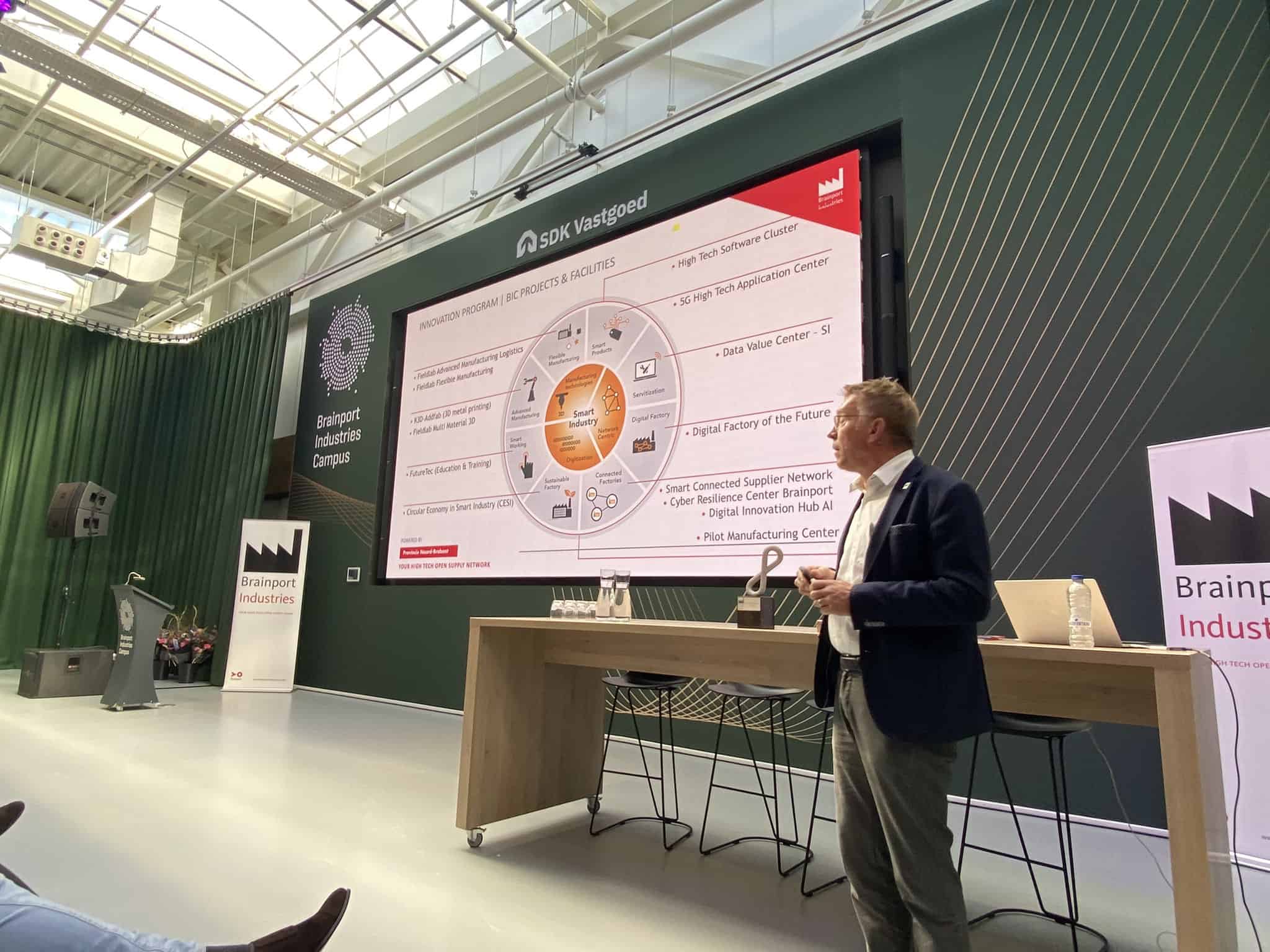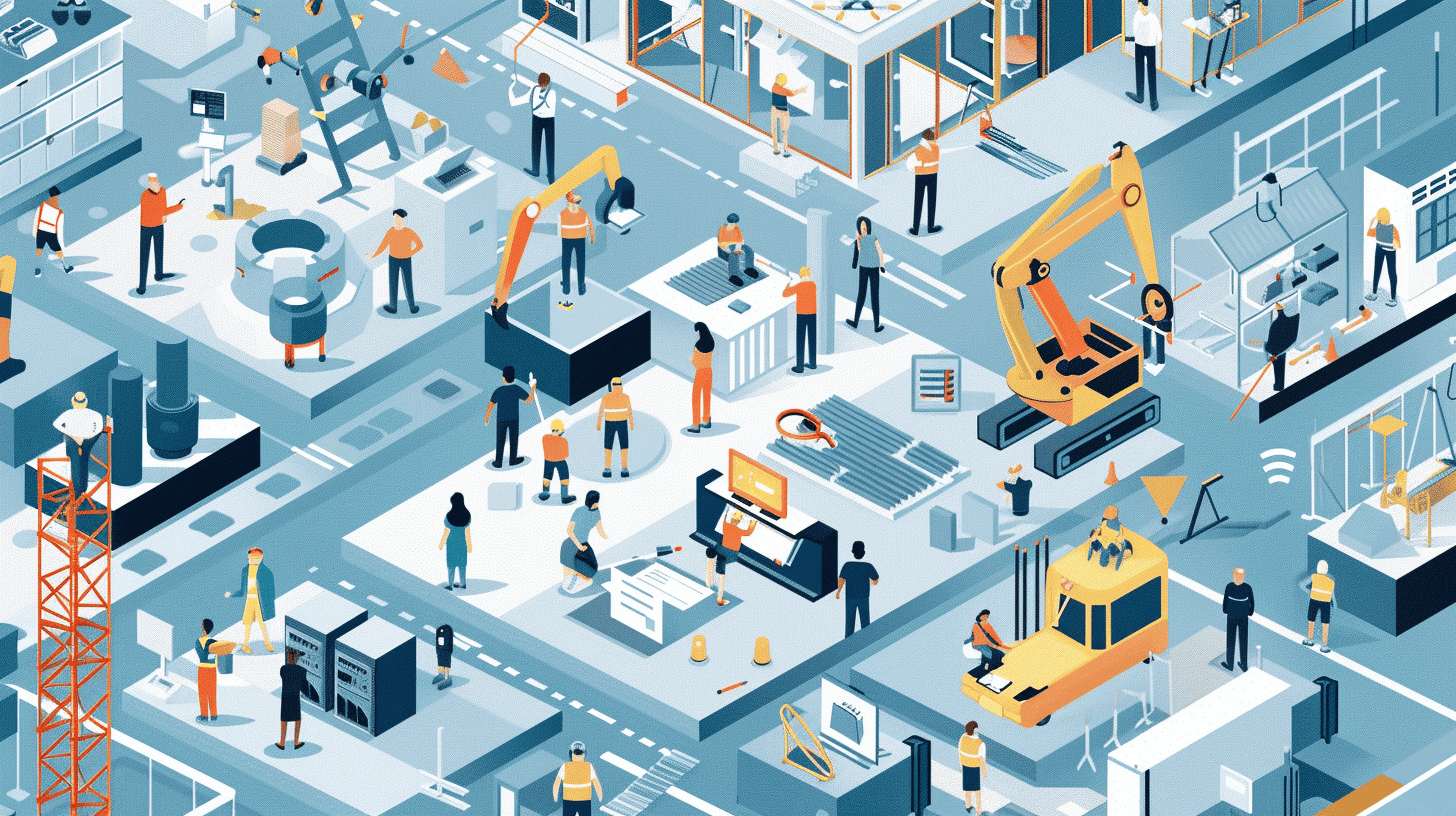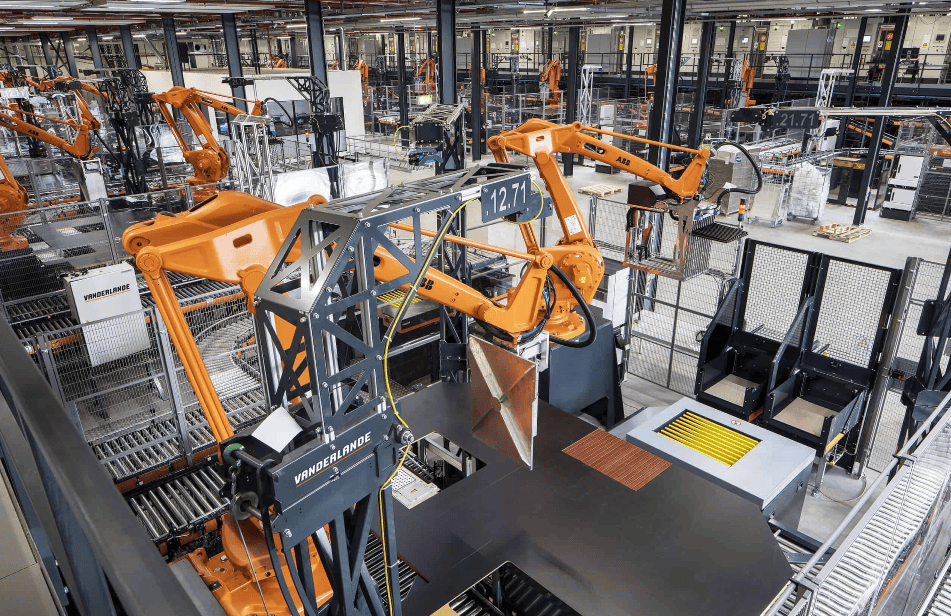
Hurdles like the quest for sustainability, cyber-attacks, and a talent shortage increasingly weigh down on the high-tech manufacturing industry. Conferences and events worldwide have made these topics a central part of their program. The first edition of ZIE 2023 is no exception, and the many hundreds of visitors who showed up at Rotterdam’s Van Nelle Fabriek were proof of the need for a gathering like this.
They all came to participate in the networking event jointly organized by Mikrocentrum and Hi Delta. Eighty big and small high-tech manufacturing companies, educational institutions, and governmental organizations set up their respective exhibition booths in the industrial open-plan space of the old tobacco factory. Meanwhile, student groups and other interested visitors roamed the floor. A number of notable keynote speakers — including company CEOs and chairs of educational boards — took the stage in one of two halls. The event’s main takeaway? Cross-sectoral collaboration is the only way forward.
“In South Holland, there are 6,000 manufacturing technology companies that deserve to work together much more than they are doing now”, Hi Delta director Martin van Gogh told Innovation Origins. He explained that knowledge sharing is a prerequisite to finding solutions for the current transitions around circularity, energy, and digitization.
ZIE 2023 wanted to act as one of the initiators of this process: “People have to leave here today and think: that first edition was good, it was fun, it has the potential to be a bigger event. And I think we have succeeded in doing that. It’s also an expo with lectures, so it’s a nice mix for visitors too. You can come for all kinds of things… to network, meet people, and gain knowledge”, added Timo van Leent, Manager of the Events Department at Mikrocentrum.
Fewer workers, not enough productivity
A staff shortage is ongoing in the Netherlands, particularly for nurses, engineers, electricians, technicians, and software developers. In the last quarter of 2022, there were 123 vacancies for every 100 unemployed people, while the number of jobs continued to grow by 85,000, according to Statistics Netherlands.
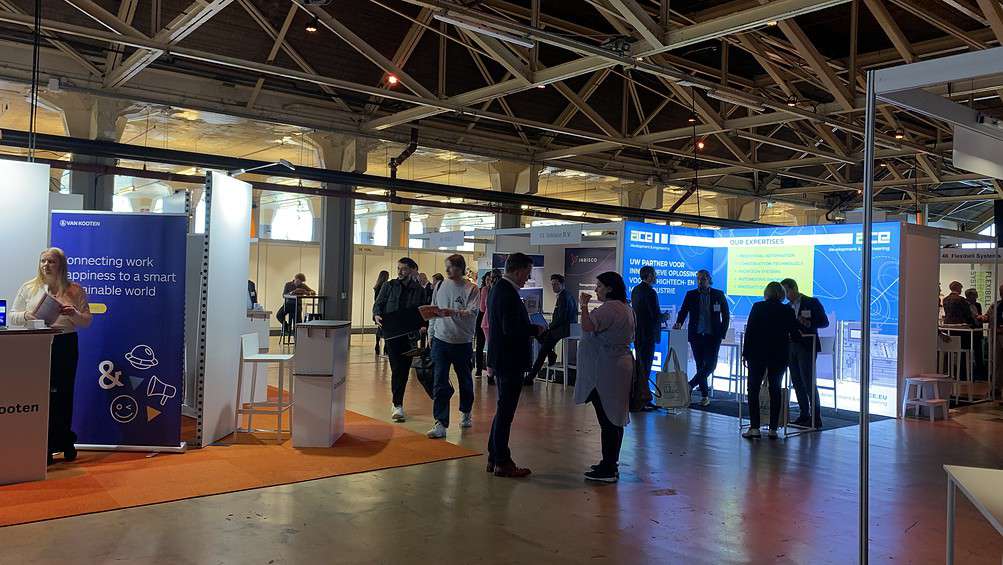
“Every time we’re in a corona recession or in an energy crisis or a euro crisis, or if there’s a recession, everyone takes their eye off the ball and pretends again that unemployment is our problem. That’s not true anymore. That was your father’s problem or your mother’s problem in the last century. Our problem is that we have too few people”, said journalist and economist Mathijs Bouman on stage. He was the day’s first keynote speaker, commanding the filled room with quick-thought and witty humor, seemingly in an attempt to uplift the bleak topic.
In addition to a shortage of qualified workers, the Netherlands is facing the problem of stagnation in labor productivity growth. Not only do the two go hand in hand, but innovation is often expected to solve both. Autonomous robots are frequently considered one of the answers since they can already do complex jobs like scaffolding on construction sites or cleaning sea floors.

A ‘robot touch’ can also help in horticulture: “There’s a labor shortage in our current greenhouses. We still need a lot of workers from outside, like from Romania and Poland. And robotics and optimization can, of course, play a role in solving this”, explained Lisanne van Oosterhoud, Project Manager at FME, one of the founders of RoboCrops.
This initiative gives the space for collaboration between greenhouse growers and high-tech manufacturing companies to work on increasing digitalization, optimization, and AI technologies in horticulture. Aside from improving productivity and fixing the worker shortage, sustainability is another key benefit of adopting this technology.
“You can visualize water usage, energy usage, supply and demand, what your plant actually needs right now, or what it will need later. You can really play with it and decide when the right moment is for your input. AI and digital innovation can play a large role in that. You can really go from no usage of innovation and technology towards maybe even a fully automated greenhouse”, van Oosterhoud explained further.
Communication between schools and the industry
If the industry wants to increase the pool of qualified technical workers, a close collaboration with educational institutions is necessary. This is why the organizers of ZIE 2023 invited educational institutions to join the floor of exhibitors and scheduled several talks around the topic. One notable lecture was given by Ron Bormans, outgoing Chair of Rotterdam University of Applied Sciences.
“In the Netherlands, there is a huge upward pressure to study as high as possible”, Bormans said, explaining this to be one of the reasons why students are increasingly opting for research universities over vocational schools. As a result, fewer students are enrolling in technical programs: “At my college, 10,000 people study engineering. That’s a decent number, but I predict it’s going to decline if we’re not going to do anything.”
Important in this is smooth communication between the industry and educational institutions. This is often fostered through year-long internships and in-depth supervision from both parties. Even so, there continues to be a mismatch between the qualifications that companies demand and those that schools can teach.
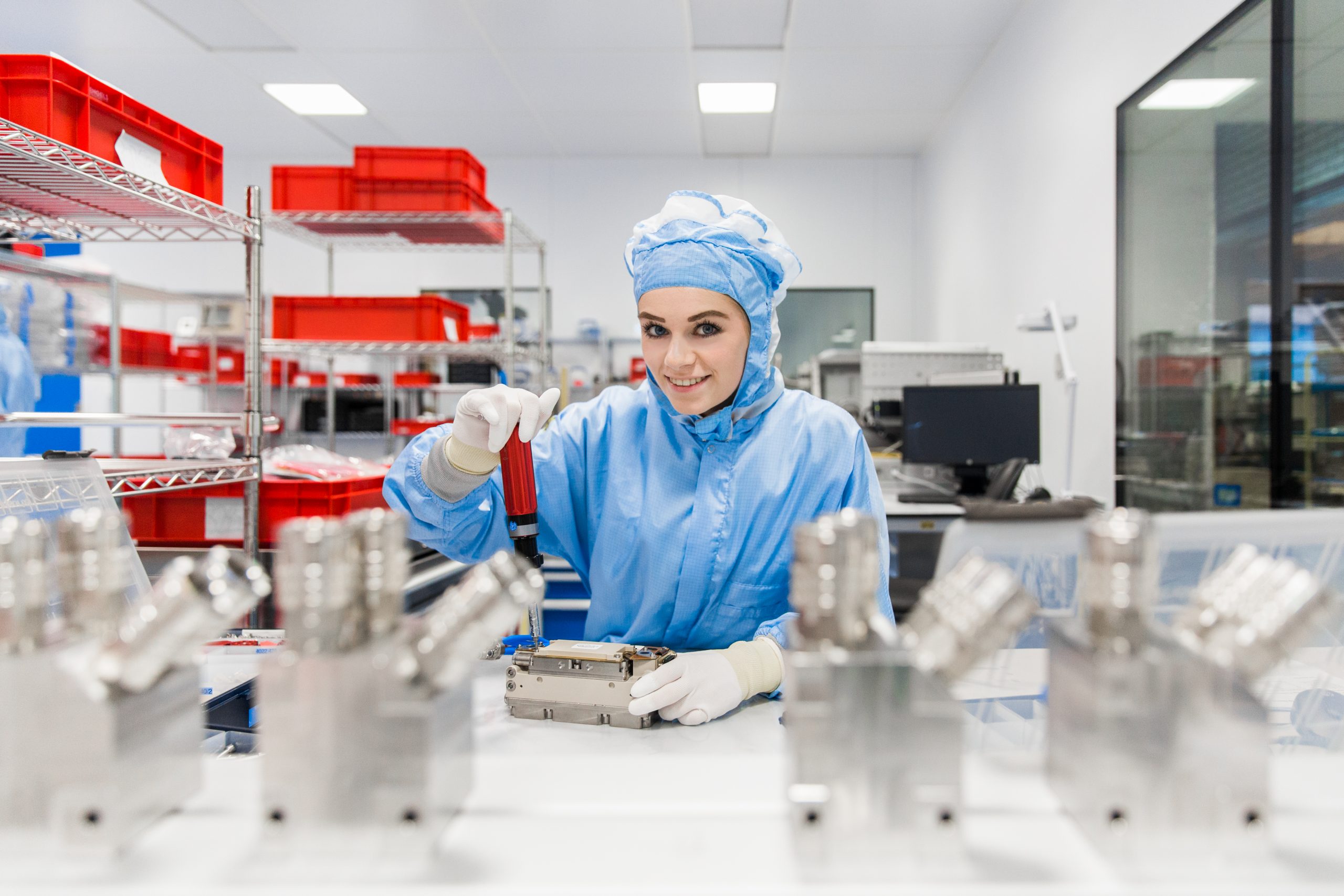
“Sometimes specific skills have to be provided by the company”, said Dennis Koeman, who teaches at ROC Mondriaan School for Technology and Engineering. He explained that his school could only provide a basic skill set and that a student’s mindset matters more anyway: “Our students always need to learn, they always need to be interested in new technology, and they need to be problem solvers in an abstract way. Because, when new technology arrives, our students need to adapt to that.”
However, close collaboration between schools and companies can only do so much when part of the problem is systemic. High-tech companies struggle to fill their vacancies, yet their recruitment strategies only target a specific type of person. Women and minorities remain underrepresented within the industry, frequently feeling alienated or discriminated against.
“Because people with a migration background often have a somewhat different name, it’s often just a little bit harder for them to get that job or that internship than people called Jansen or Bormans or Peters”, Bormans continued in his keynote on education, driving home his claim by pointing out that the vast majority of his audience was white. “Internship discrimination is still a big issue, and we are collectively responsible for doing something about that.”
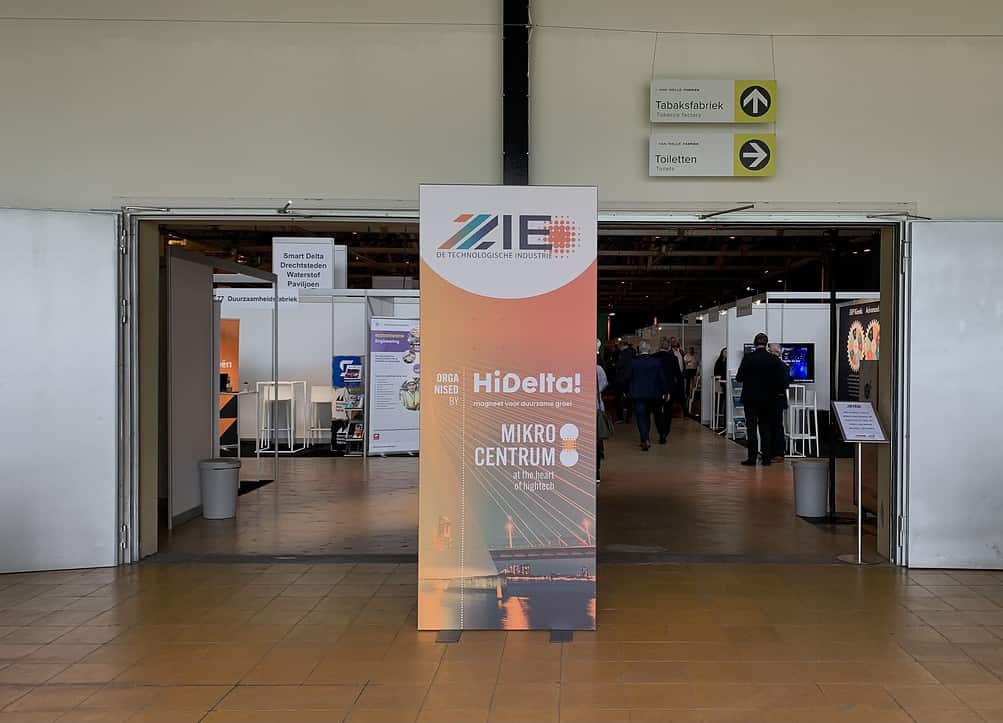
Is knowledge sharing the solution?
While every high-tech company at ZIE 2023 showcased its own unique selling points, they were clustered together based on similarity in the exhibition hall. Present alongside the aerospace, robotics, and cyber-security pavilions, the center of the room was dedicated to the IQ-sponsored start-up square. Here, Sanjesh Hoskopple spoke about the Delft-based start-up Fusion Engineering, where he is Lead Control Engineer. The company creates certified flight controllers for the commercial drone market, developing software and hardware in collaboration with TU Delft. This allows for more stable and reliable control for customers who use drones for deliveries or inspections.
PCB designers
Cross-sector collaboration at events like ZIE 2023 may partially help solve the big issues within technology, but it can also be helpful for companies in other ways. Hoskopple: “We did meet some PCB designers here who can help us with rapid prototyping. Since we are in the design and development phase, we have a lot of iterations of our designs. So, if we can find a partner with whom we can do rapid prototyping, it will be very beneficial for us. I think we have found some good leads during this event already.”
3D printing companies
In addition to PCB designers, 3D printing companies play an important role in prototyping. They further successfully minimize production errors, time, costs, and waste. Particularly the latter is what Commercial Engineer Jelle Snijders names as the benefit of the company he works for, Royal3D, which 3D prints on an industrial scale. It frequently focuses on the production of boat hulls.
“We buy polymers that are already recycled and use that in our production process”, Snijders explained. “And that’s a good thing for the environment because normally, I wouldn’t be able to know where the plastic will go, but now we can just reuse it again. We have a big regrinder to recycle all our waste material ourselves. So, it’s a closed circle. We also have some 1,600 square meters of solar panels on the roof, so when it’s daytime, we can print solely on solar energy.”
Younger generations
Snijders also thinks that continued sustainable innovation comes down to the younger generations, who need to be passionate about what they do: “You must be very motivated to solve the problem of the climate crisis. You see it a lot now with very rigid older companies where it’s hard to make things move because they want to stick to the old pattern”, he concluded. “It sounds a bit cringe but follow your heart regarding your job because if you’re passionate about it, working does not feel like working.”



